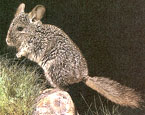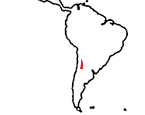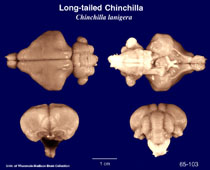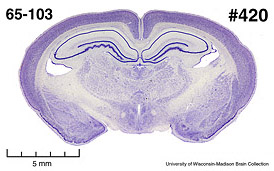|
Long-tailed
Chinchilla
(Chincilla lanigera) #65-103 |
||||
|
|
Physical
characteristics and distribution
|
|
Long-tailed Chinchillas grow to about one foot in length. In nature, they are light gray, while other colors have been developed in captivity. Their diet consists of plants, fruits, seeds, and small insects. In their native habitat, chinchillas live in burrows or crevices in rocks. They are monogamous and live in pairs. Unusual for mammals, chinchilla females are significantly bigger than males and can breed any time of the year. They have a very long gestation period for a rodent of 111 days. Due to this long pregnancy, Long-tailed Chinchillas are born fully furred and open their eyes soon after birth. Litters range from one to eight babies, although the average litter size is two. They are native to N Chile, in foothills of the Andes and coastal mountains south to Talca. |
|
Description
of the brain
|
|
Animal
source and preparation
|
|
All
specimens collected followed the same preparation
and histological procedure.
|
Other
Related Resources (websites and publications)
List of Specimens | Explore Collections | Brain Sections | Brain Evolution | Brain Development | Brain Circuitry | Brain Functions | Location and Use | Related Web Sites | Contact Us | Search MSU Database | Personnel | Home



